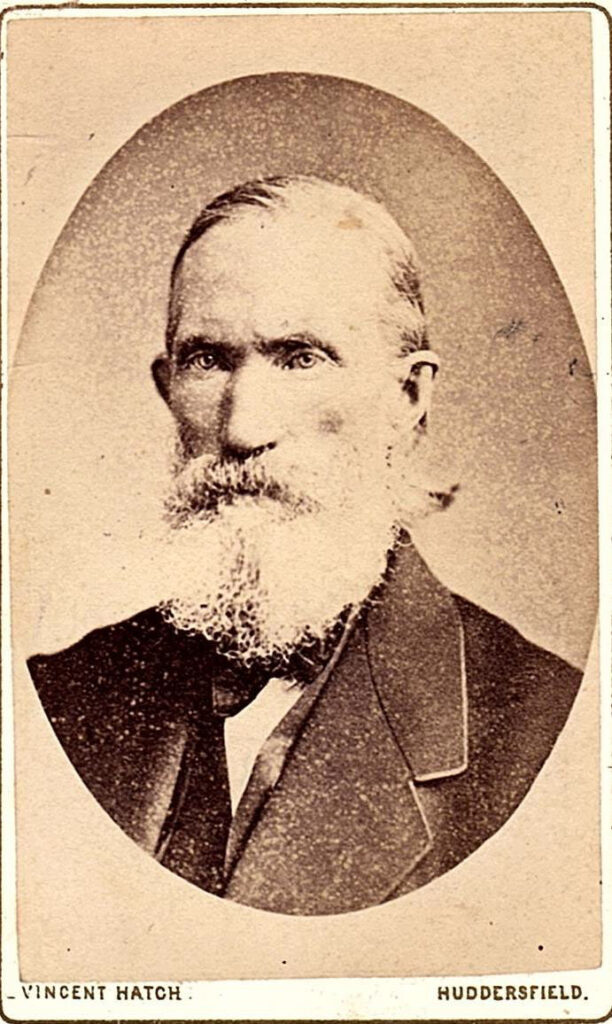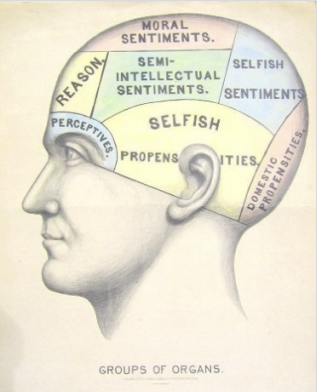Section #14 - Anti-Slavery sentiment grows due to the Fugitive Slave Act and Uncle Tom’s Cabin
Chapter 170: Deeply Flawed “Scientific Studies” Used To Support Black Inferiority
As Of The 1850’s
The Crania Size Conclusions Of Dr. Samuel Morton
In addition to citing the Bible to support the practice of slavery, Southern defenders also turn to flawed “scientific” studies which claim to prove that blacks are a different and inferior species.
Ironically it is two Northern men who reinforce the beliefs.
One is Dr. Samuel Morton, born in Philadelphia in 1799, who helps found the Pennsylvania Medical School after earning an advanced degree from Edinburgh University in Scotland.
His passion is the study of the human anatomy, and he accumulates what is regarded at the time as the world’s largest collection of skulls, going all the way back to the Egyptian era. After measuring his specimens, he publishes reports stating that white skulls are larger (82 cubic inches on average) than black skulls (78 cubic inches), and draws two conclusions from his findings.
The first challenges the accepted biblical story that all humans descended from a common set of “parents,” Adam and Eve in the Garden of Eden. Instead, Morton argues for what becomes known as “polygenism” – the idea that the races originated as different species, each suited to, and evolving within, their own “provinces” of the globe.
His second conclusion is that the various species differ in terms of their potential to thrive – with Caucasians having greater skull capacity, hence larger brains, inherently advantaged over Negroes, with their smaller crania.
Morton’s landmark work, Crania Americana; or, A Comparative View of the Skulls of Various Aboriginal Nations of North and South America: To which is Prefixed An Essay on the Varieties of the Human Species comes out in 1839 and earns him the reputation as “father of American physical anthropology.”
The “Phrenology” Research Of Orson Squires

A second “scientist” often cited by pro-slavery supporters is Orson Squire Fowler.
Fowler grows up in Coshocton, New York and graduates from Amherst College in 1829, intent on becoming a minister. While in school, however, he meets Henry Ward Beecher, later a famous clergyman, and together they become fascinated by the emerging “science” of phrenology. It originates with an Austrian physician, Franz Gall, who concludes that examining facial shapes can predict human intelligence and other traits. Thus a skilled phrenologist would explore the contours of a patient’s head in search of telltale “bumps” – the bump of superior knowledge or artistry, benevolence or avarice, veneration or hope, combativeness or conjugality. phrenologist would explore the contours of a patient’s head in search of telltale “bumps” – the bump of superior knowledge or artistry, benevolence or avarice, veneration or hope, combativeness or conjugality.
Beecher eventually dismisses this notion, but Fowler embraces it wholeheartedly, abandons his interest in the ministry and, with help from his brother and wife, becomes the leading American practitioner of phrenology.
Like Morton, Fowler “discovers” racial tendencies from his studies and publishes them in 1843 in Heredity Descent, which asserts that the “coarse hair of the negro signals coarse fibers in the brain,” hence poor verbal skills and other traits best suited for nursing children or acting as servants.
Sidebar: Orson Fowler’s Phrenology Phenomenon

The “science” of phrenology is no laughing matter to Orson Fowler’s contemporaries, and he is able to parlay his lectures and his American Phrenological Journal into celebrity status for himself and a thriving business to boot.
Between 1838 and 1854 he opens clinics — first in Manhattan, later in Philadelphia, Boston and even London – where, for $1.00 to $3.00, a visitor can receive insights into their own personal “bumps” and associated implications.
Those who stop in for an exam and a reading run from average pedestrians to the sophisticates of the period, among them Ralph Waldo Emerson, Horace Greeley, Oliver Wendell Holmes, Brigham Young, John Brown, Walt Whitman, Clara Barton, James Garfield and the educator, Horace Mann, who declares phrenology “the greatest discovery of the age.”
Many years later, the author Mark Twain visits Fowler and his MD wife at their London venue, using a false identity to “test” the accuracy of their assessment about his personality. His recounting goes as follows:
I made a small test of phrenology for my better information. I went to Fowler under an assumed name.
When I entered his office, Fowler received me with indifference, fingered my head in an un-interesting way, and named and estimated my qualities in a bored and monotonous voice. He said I possessed amazing courage, an abnormal spirit of daring, a pluck, a stern will, a fearlessness that were without limit.
I was simply astonished at this, and gratified, too; I had not suspected it before. But then he foraged over on the other side of my skull and found a bump there called “Caution.” This bump was so tall, so mountainous, that it reduced my “Courage” bump to a mere hillock by comparison.
He continued his discoveries…and found a CAVITY in one place where a bump should have been in anybody else’s skull…He startled me by saying that that CAVITY represented a total absence of a “Sense of Humor!”
I was hurt, humiliated, resentful, but I kept these feelings to myself. At bottom I believed his diagnosis was wrong, but I was not certain. In order to make sure, I thought I would wait until he should have forgotten my face and the peculiarities of my skull—and then come back again and see if he had really known what he had been talking about, or had only been guessing.
After three months I went back again, but under my own name this time, heralding my arrival with a card bearing both my name and my nom de guerre. Once more he made a striking discovery—the CAVITY was gone, and in its place was a Mount Everest— figuratively speaking – 31,000 feet high, the loftiest BUMP OF HUMOR he had ever encountered in his life-long experience! Again, I carried away an elaborate chart. It contained several sharply defined details of my character, but it bore no resemblance to the earlier chart.
These experiences have given me a prejudice against phrenology which has lasted until now. I am aware that the prejudice should have been against Fowler, instead of against the art —
But, I am human, and that is not the way prejudices act.